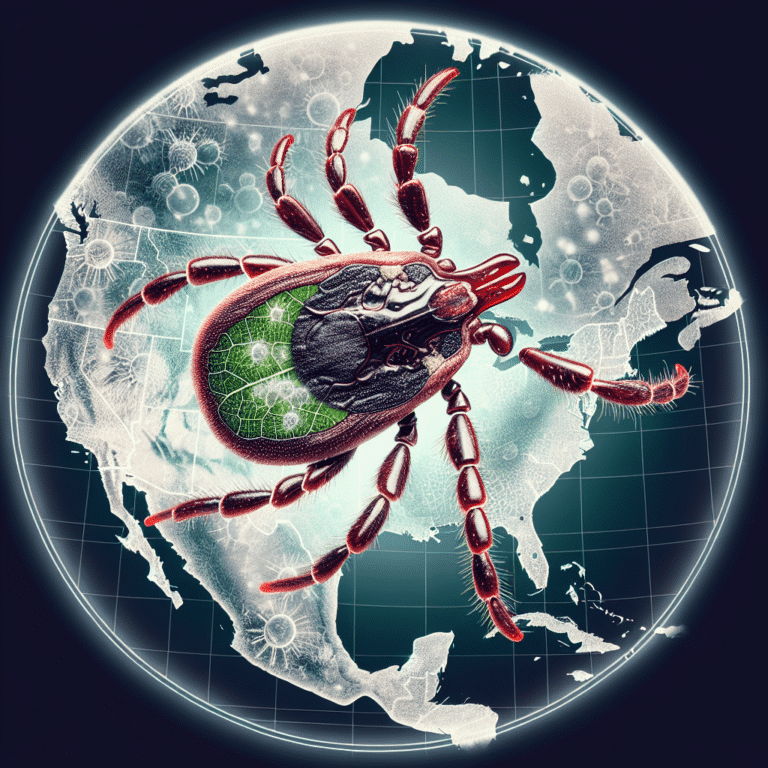Summary
- Tickborne diseases are a growing public health concern in the northeastern United States due to the expansion of native and invasive tick species.
- The Gulf Coast tick, which spreads Rickettsia parkeri, has established populations in areas such as Connecticut, New York, and New Jersey, posing a risk of infection to humans in metropolitan areas.
- Conservation efforts to restore native grasslands in the northeastern United States may have inadvertently created habitats favorable for Gulf Coast ticks, leading to their establishment in the region.
- A case study of a woman in Connecticut who contracted Rickettsia parkeri from a Gulf Coast tick highlights the importance of accurate tick identification for proper diagnosis and treatment.
- Given the evolving risks of tickborne diseases in the region, it is crucial for the public to be aware of prevention strategies, such as using repellents and conducting thorough tick checks after exposure to tick-infested areas.
Tick bites are becoming an increasing concern in the Northeastern United States, with native and invasive species posing serious public health risks. Blacklegged and lone star ticks, in particular, are spreading throughout the region, bringing with them a host of tickborne pathogens. The expansion of these tick populations has led to a rise in reported cases of tickborne diseases in the area.
The Gulf Coast tick, also known as Amblyomma maculatum, is one of the key culprits behind the spread of these diseases. This tick species, which was once confined to coastal regions bordering the Gulf of Mexico, has now established populations in states hundreds of miles inland and as far north as Connecticut. The migration of grassland birds has played a crucial role in spreading Gulf Coast ticks to new locations.
Unlike other tick species that prefer woodland habitats, Gulf Coast ticks thrive in grasslands. The transformation of native grasslands into agricultural areas and rangeland has created ideal habitats for these ticks. Conservation efforts to restore native grasslands in the Northeast may have inadvertently facilitated the establishment of Gulf Coast tick populations in the region, as seen in locations like the former Freshkills landfill on Staten Island.
Gulf Coast ticks are known to transmit Rickettsia parkeri, a pathogen that causes spotted fever rickettsiosis. The infection rates in these ticks can be as high as 56%, posing a significant risk to humans. Individuals living or recreating near areas where Gulf Coast ticks are prevalent, such as New York, New Haven, Newark, and Philadelphia, are particularly at risk of tickborne diseases.
In a recent incident, a 29-year-old woman in Connecticut experienced the effects of a Gulf Coast tick bite. After discovering a tick attached to her neck, she developed a rash and other symptoms consistent with Rickettsia parkeri infection. Prompt treatment with antibiotics helped her recover quickly, highlighting the importance of early detection and management of tickborne illnesses.
Given the morphological similarities between Gulf Coast ticks and American dog ticks, accurate identification of tick species is crucial for effective disease prevention. Improving the capacity to detect and identify ticks and the pathogens they carry is essential in regions endemic for various tickborne diseases. Education on tick bite prevention strategies, such as using EPA-registered repellents and conducting regular tick checks, is vital in reducing the risk of tickborne infections.
Dr. Molaei, a research scientist at the Connecticut Agricultural Experiment Station and associate professor at the Yale School of Public Health, emphasizes the need for ongoing research on tickborne pathogens and effective surveillance programs to address the evolving risks of tickborne diseases in the Northeast. Awareness and education on tick bite prevention remain key in protecting public health in the region.
Overall, the increasing prevalence of tickborne diseases in the Northeast highlights the importance of proactive measures to prevent tick bites and manage potential infections. By understanding the risks associated with ticks and taking appropriate precautions, individuals can better protect themselves and their families from tickborne illnesses.
Infectious Diseases, Public Health & Prevention, Dermatology


